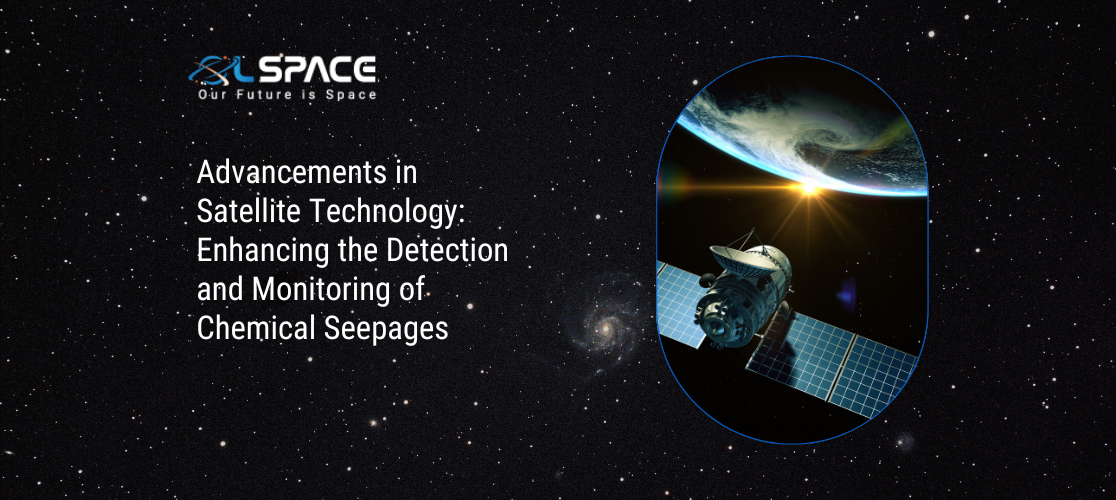21 July 2023
Advancements in Satellite Technology: Enhancing the Detection and Monitoring of Chemical Seepages

Satellite technology has revolutionized various fields, including environmental monitoring and disaster management. One significant area where advancements in satellite technology are making a remarkable impact is the detection and monitoring of chemical seepages. Chemical seepages, often caused by industrial activities, accidents, or natural processes, can have severe environmental and human health implications. In this blog post, we will explore how advancements in satellite technology are improving the detection and monitoring of chemical seepages, leading to faster response times, better data accuracy, and enhanced environmental protection.
High-Resolution Imaging: One of the key advancements in satellite technology is the development of high-resolution imaging capabilities. Modern satellites equipped with high-resolution sensors can capture detailed images of the Earth’s surface, enabling the identification of potential chemical seepages more accurately. These high-resolution images provide valuable information about the affected areas, facilitating quicker response and intervention.
Hyperspectral Imaging: Hyperspectral imaging is another groundbreaking technology that has greatly enhanced the detection of chemical seepages. Unlike traditional imaging systems, hyperspectral sensors can detect a broad range of wavelengths, allowing them to identify specific chemical signatures. This capability enables precise identification of hazardous substances, such as oil spills, chemical leaks, or other pollutants, and facilitates targeted response strategies.
Real-Time Monitoring: Advancements in satellite technology have enabled real-time monitoring of chemical seepages. Satellite systems equipped with real-time data transmission capabilities can continuously monitor targeted areas, providing up-to-date information on the extent and movement of chemical pollutants. Real-time monitoring allows authorities to respond promptly to emergencies and implement timely measures to mitigate environmental impacts.
Synthetic Aperture Radar (SAR): Synthetic Aperture Radar is a powerful satellite technology that can operate in all weather conditions, including cloudy skies and at night. SAR systems can penetrate through clouds and provide accurate images of the Earth’s surface, making them highly effective for detecting chemical seepages regardless of weather conditions. SAR data complement other satellite sensors and offer comprehensive insights into the extent and severity of chemical contamination.
Data Fusion and Integration: Advancements in satellite technology have also improved data fusion and integration capabilities. By combining data from multiple satellites and different sensors, researchers and environmental agencies can obtain a more comprehensive view of chemical seepages. Data fusion helps in cross-validating information, reducing false alarms, and enhancing the accuracy of pollution assessments.
Machine Learning and AI Applications: Satellite technology advancements have been coupled with the integration of machine learning and artificial intelligence (AI) applications. AI algorithms can analyze vast amounts of satellite data, identifying patterns and anomalies associated with chemical seepages more efficiently than traditional manual methods. Machine learning algorithms can be trained to recognize specific pollution signatures and alert authorities automatically when potential seepages are detected.
Conclusion: Advancements in satellite technology have brought transformative changes to the detection and monitoring of chemical seepages. High-resolution imaging, hyperspectral imaging, real-time monitoring, synthetic aperture radar, data fusion, and machine learning have significantly improved our ability to detect and respond to chemical seepages with greater speed and accuracy. By harnessing the power of satellite technology, environmental agencies, researchers, and governments can proactively protect our ecosystems, prevent environmental disasters, and safeguard human health from the adverse effects of chemical pollutants. As technology continues to evolve, the future holds even more promising possibilities for enhanced environmental monitoring and sustainable resource management.
Join our community and never miss an update! Subscribe to our newsletter and blog to stay up-to-date on the latest trends, tips, and insights in your area of interest. Don’t miss out on exclusive content and promotions. Sign up now and be a part of our growing community!
